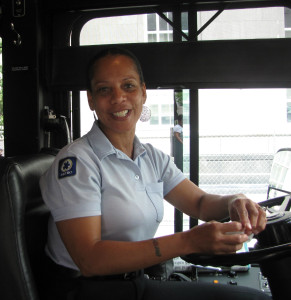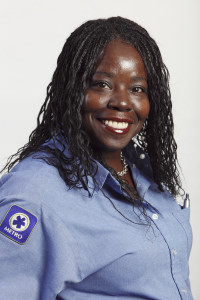Kindness
A Cincinnati Teen Talks About Volunteering & Community Service
I asked Cincinnati teen Jillian Schmidt, a student at Mt. Notre Dame High School, what volunteering/community service means to her and this is what she shared.
“Service is an important part of my life. I love reaching out to others and helping them the best I can with whatever is possible. By 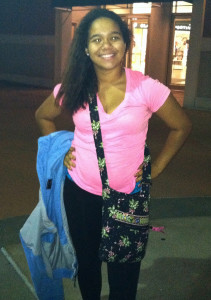 doing service I learn many things I didn’t know before and I meet new people every time. Every time I do service, I get this feeling in my stomach; it starts off as butterflies and turns into excitement and joy. This is the feeling I get after I help others and while I help others, it is probably one of the best feeling ever. My favorite volunteer work is volunteer work with kids or some type of landscaping volunteer work. When you do volunteer work do something that you love to do or do it with a friend because that always makes it more fun. I think that the most rewarding thing that you can leave with is to know that you helped make a difference and that you helped others. I have learned to be more grateful for what I have through many of my service projects. I have also noticed or learned that what I may get out of a service project the other person may not get out of the service project. Sometimes I may get a little tired during the time I am doing service, but what keeps me going is the fact that I am helping others.”
doing service I learn many things I didn’t know before and I meet new people every time. Every time I do service, I get this feeling in my stomach; it starts off as butterflies and turns into excitement and joy. This is the feeling I get after I help others and while I help others, it is probably one of the best feeling ever. My favorite volunteer work is volunteer work with kids or some type of landscaping volunteer work. When you do volunteer work do something that you love to do or do it with a friend because that always makes it more fun. I think that the most rewarding thing that you can leave with is to know that you helped make a difference and that you helped others. I have learned to be more grateful for what I have through many of my service projects. I have also noticed or learned that what I may get out of a service project the other person may not get out of the service project. Sometimes I may get a little tired during the time I am doing service, but what keeps me going is the fact that I am helping others.”
Metro Bus Operators To Be Honored For Rescuing Children
The quick thinking of two Cincinnati Metro bus operators might have saved the lives of two children in separate incidents less than a week apart in late February and early March.
Operators Ella Holloway and Dianne Wyly drive different Metro bus routes in different communities, but they both had similar experiences when they saw very young children walking alone near busy streets. They both jumped into action to keep the little ones from harm:
Feb. 28, 2013: Operator Holloway was driving toward downtown on Rt. 33 on Glenway Avenue near Olivia Lane when she noticed a 2- or 3-year-old boy walking alone on the sidewalk. The child wasn’t wearing a coat, just shorts and shoes in 30-degree, windy weather. She stopped the bus, brought the child on board, and called for assistance. The Cincinnati Police Department responded and took the boy to the Cincinnati Fire Department on Glenway. Holloway has been a Metro bus operator for 22 years.
March 6, 2013: Operator Wyly was driving toward downtown on Rt. 43 when she saw a 3-year-old little boy walking alone on Reading Road near Asmann Avenue. It was a snowy, icy day and his shoes were on backwards and coat barely on. She brought the child onto her bus and called for assistance; Cincinnati Police took the child to a safe location. She has been a bus operator for 18 years.
“Metro bus operators are eyes on the community,” said Metro’s CEO Terry Garcia Crews. “Operators Holloway and Wyly demonstrated outstanding sensitivity and judgment; their actions helped prevent these children from being injured. They are heroes for keeping the children safe, and their actions deserve commendation.”
Holloway and Wyly will be presented with the CEO’s STAR Award at the Southwest Ohio Regional Transit Authority Board meeting.The STAR Award for “Service That Attracts Recognition” is a selective award is presented by, and at the sole discretion of, Metro’s CEO. The award acknowledges and rewards employees who demonstrate exemplary service to Metro and the community.
Metro is a non-profit, tax-funded public service of the Southwest Ohio Regional Transit Authority, providing about 17 million rides per year in Greater Cincinnati.
How Many Random Acts Of Kindness Can $1 Buy?
What can you buy with a $1 bill? Well, a random act of kindness for starters. How about many random acts of kindness?
One hundred students at John Jay Middle School in the Katonah-Lewisboro school district in Cross River, New York were asked to spend one dollar on something good for someone else. The assignment was given one week after the tragic shooting at Sandy Hook Elementary School. Teachers Laura Atwell, Gail Bergman, Amy Baisley, Nick Stathis and Jim Egeler gave the kids 26 days for the project (representing the number of students and teachers killed).
“We were all stunned after Newtown,” Atwell told Lisa Buchman of the Bedford-Katona Patch. “It might seem to seventh graders that there isn’t a lot they can do after a situation like that, so we wanted to empower them to do something good.”
The teachers donated $20 of their own money so each student would receive one dollar to spend on someone else.
The results?
Many of the students increased their funds by soliciting matching donations through social networks.
Mills Reed purchased three copies of the book The Three Questions by John Muth, and donated one copy each in memory of Anne Marie Murphy, a Katonah native and teacher who died at Sandy Hook. Reed arranged for the books to go to the Mount Kisco Library, Katonah Village Library and Somers Public Library—where Murphy was born, raised and buried.
Ryan Kingston of Cross River used social media to raise matching $1 contributions for the Leukemia & Lymphoma Society in memory of his best friend whom he lost to the disease a few years ago.
Caleigh Boyer-Holt of Katonah also grew her dollar which she and six other students used to buy supplies to hold a bake sale in Katonah. They raised $200 and donated it to the Leukemia & Lymphoma Society.
Here are some other examples, as relayed by Atwell to the Bedford-Katona Patch:
Three students (independent of each other) used the dollar to buy stamps, and wrote and mailed letters to their elected officials asking for sensible laws around guns.
One student obtained matching funds and pre-paid for 26 coffees at Noka Joe’s, leaving 26 slips of paper at the counter to be handed to each customer, explaining their coffee was pre-paid in honor of the lives lost at Newtown.
One student traveling in Belize gave her dollar to a girl of apparent little means there.
Many students did extra chores at home, earning extra money to donate to local nonprofts such as the Outreach ALS Foundation.
“One dollar was the seed for these kids to spread kindess,” Atwell said. “This may turn into a team tradition.”
Random Act Of Kindness At Tim Hortons Spreads
 You know what they say about how random acts of kindness spread? Well, at 10 am on Dec 21, a Tim Hortons customer paid the order of the next vehicle in line. It was the start of a chain of kindness that last THREE HOURS and 228 ORDERS!
You know what they say about how random acts of kindness spread? Well, at 10 am on Dec 21, a Tim Hortons customer paid the order of the next vehicle in line. It was the start of a chain of kindness that last THREE HOURS and 228 ORDERS!
And when customers inside the restaurant heard what was going on, they also started paying it forward.
Michelle Robichaud, spokeswoman for the company told the Winnepeg Free Press that Tim Hortons restaurant didn’t know who initiated the chain.
“We don’t know who started it, but that’s the beauty of this act of generosity,” she said. “It was the start of something wonderful.”
Cincinnati Philanthropist Roger Grein Is An Inspiration
I’d like to tell you a little about the man with whom I have been spending a lot of time working with these past few weeks. His mother used to call him a ‘Gift from God” and I think she was pretty intuitive.
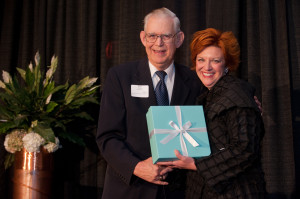
Roger Grein with Heidi Jark, Fifth Third Bank Foundation manager and honorary chair for the National Philanthropy Day Awards luncheon by the Association of Fundraising Professionals Greater Cincinnati Chapter Photo credit: Lowry Photo Group
Roger Grein was recently honored nationally and locally with distinguished honors for his lifelong generosity and focus on strengthening lives and communities. He was selected from 19,000 full time volunteers as the National Father George Mader Award by the Catholic Volunteer Network. Named after the Network’s founder, the annual Award is given to an organization or individual that encourages lay men and women to serve others locally, nationally, or internationally. Grein was also named 2012 Philanthropist of the Year from the Association of Fundraising Professionals Greater Cincinnati Chapter.
The Man Behind The Awards
At 70, Roger is a simple man. He still lives in the modest house in Lockland where he spent many years of his life and comes to work every day in a nondescript building on Benson Street in Reading.
But inside those walls, inspiration comes alive. To the right of his desk are rows of softball trophies – some so tall they reach higher than my knee (And those, he says, only represent a fraction of the trophies he had. He donates them to charities.) Each trophy represents another milestone in his 36 year coaching career, a journey that led teams to world championships and travels to Hawaii, Mexico, Sweden and the former Soviet Union.
All of that is from a man who, in school never came close to earning a spot on sport teams. Roger was asked to chalk the base lines, collect towels and fetch water instead.
You see, Roger was never expected to excel – physically or mentally. He was six months old when Frank and Thelma took him home from St. Joseph Infant Home. His birth certificate read ‘disnormal baby.’ He might not walk, the doctors said. He might not talk. And he might never know them.
Thelma would have none of that. In her eyes, her son could do anything. “Heal-toe,” she used to say. She walked her son everywhere, made him study, helped him find summer jobs, taught him about giving back, and ensured he was included. She expected from her son what other mothers expect from their sons – great things.
“The only time I realized I was different was when someone asked me why I walked the way I do,” Roger told me.
By the time he was around 11, he had already started a lawn business and joined an investment club. He used to get out of class to check the stock market, he remembers.
Roger studied finance at the University of Cincinnati, earning his MBA, but even with two degrees work was hard to come by. So he got back into the lawn cutting business and started handing out business cards, asking customers if they needed tax service.
That first year, Roger did 25 returns and his mother typed them up. By the third year he was doing 345 returns and had become the tax commissioner in three municipalities. In 1970, he was doing 850 returns with a staff of eight.
Unknown, however, even to family was that in his success, Roger was secretly giving away thousands…at one point, giving over half a million each year. In 1999 he gave Northern Kentucky University $500,000 for softball player scholarships 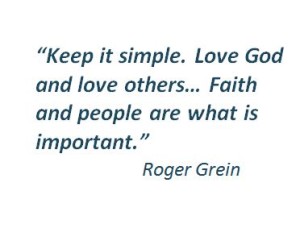 and to improve the girls’ softball field, and for students with disabilities.
and to improve the girls’ softball field, and for students with disabilities.
It was about 12 years ago, after learning of an NKU philanthropy program for students, sponsored by the Mayerson Foundation, that he vowed to expand the idea. That promise led to his meeting with Father Michael Graham at Xavier University to start a similar program there, which led to 34 colleges and universities embracing his philanthropy education model through a program that is managed by Ohio Campus Compact. And, now to over 2000 local teens engaged in becoming young philanthropists through Magnified Giving.
The vision of Magnified Giving is for every high school student in America, beginning with Greater Cincinnati and Northern Kentucky, to someday have an opportunity to learn firsthand how to be generous and wise philanthropists through hands-on experience. Participating school groups are challenged to determine how they want to invest up to $2000 in a nonprofit.
The organization’s fourth year is seeing a record number of schools and students involved. Over 2000 students in 36
Magnified Giving programs (35 school-based and one community-based) are researching hundreds of nonprofit agencies, sending over 300 grant invitation letters, and will be awarding grants collectively totally nearly $60,000 at the 2012-2013 Award Event, scheduled for April 30 at McAuley High School.


